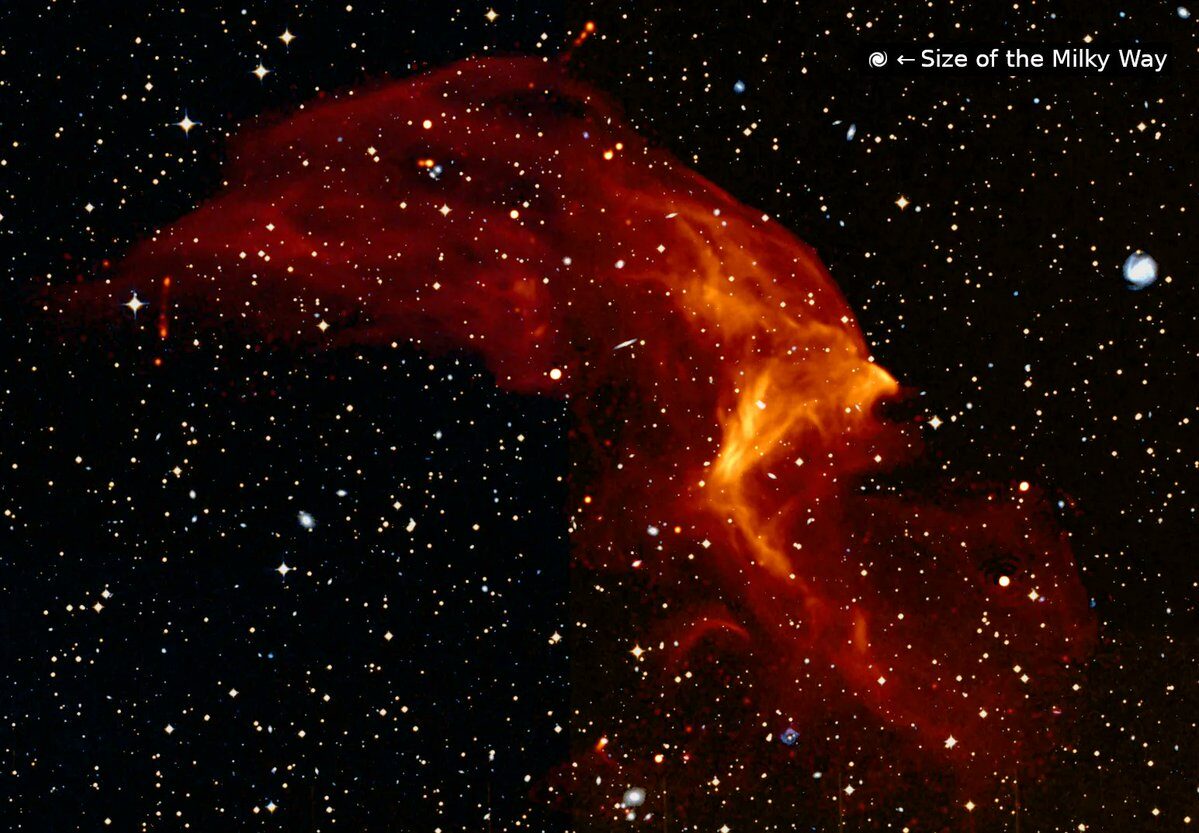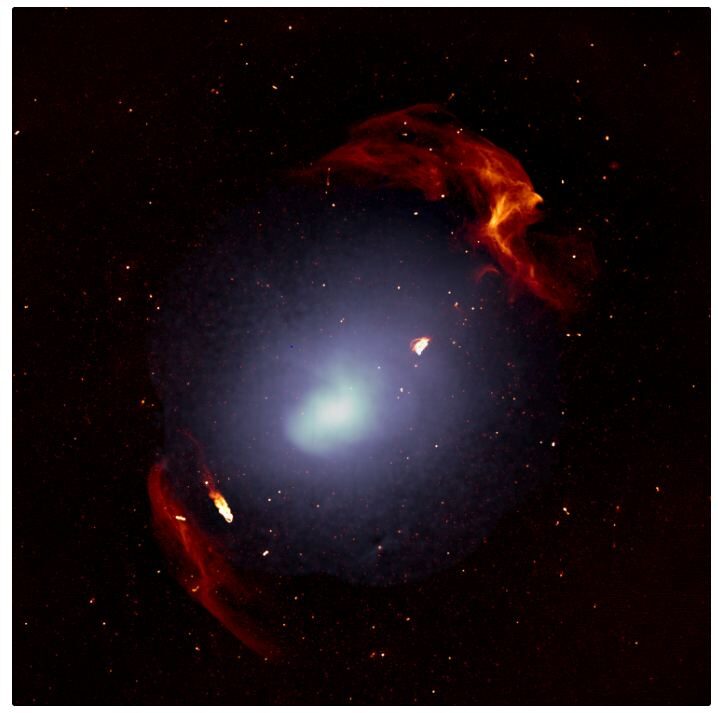
That shockwave was created by the merger of two galaxy clusters to create a supercluster known as Abell 3667. This was one of the most energetic events in the universe since the Big Bang, according to calculations by Professor Francesco de Gasperin and his time from the University of Hamburg and INAF. When it happened over 200 million years ago, it shot out a wave of electrons, similar to how a particle accelerator would. All these years later, those particles are still traveling at Mach 2.5 (1500 km / s), and when they pass through magnetic fields, they emit radio waves.

The results of all those observations is a better understanding of the physics of the merger of these galaxy clusters, which were "much more complex than we initially thought," said Dr. de Gasperin. The shockwaves themselves look like "filaments that trace the location of giant magnetic field lines." What is clear from the pictures is that, even when scientists are simply looking for big collisions, the resulting radio images might be awe-inspiring in themselves.
Learn More:
SARAO - Fast and furious: A shock wave that extends for 6.5 million light years
UT - Galaxy Mergers can Boost Star Formation, and it can Also Shut it Down
Astronomy & Astrophysics - MeerKAT view of the diffuse radio sources in Abell 3667 and their interactions with the thermal plasma
Live Science - Largest shock wave in the universe is '60 times larger than the Milky Way,' new study finds



Reader Comments
anyone else read this article and wonder: will we know when the ' wave ' is here ...???